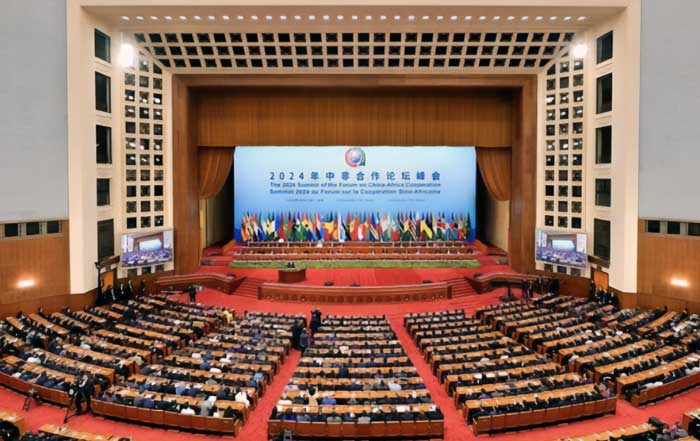The state of venture capital in 2024, reflects a dynamic yet cautious environment, heavily influenced by broader macroeconomic factors such as inflationary pressures, fluctuating interest rates, and overall market volatility. These economic drivers have created a unique scenario for investors and entrepreneurs, forcing a reevaluation of traditional funding strategies and necessitating a more focused approach to sector-specific investments. Venture capital, while undergoing significant adjustments, remains a critical engine for innovation, particularly in high-growth sectors such as technology and healthcare. As the market seeks stability, venture capitalists (VCs) and startups alike are navigating this challenging terrain with a sense of cautious optimism, recognizing both the risks and the potential for growth.
The Current State of Venture Capital in 2024
In the first quarter of 2024, global venture capital funding totaled approximately $38.2 billion across 3,205 individual deals. This data paints a picture of a market in flux, one that is grappling with the residual impacts of economic uncertainty while showing signs of resilience. The decrease in funding compared to the heights reached during the pandemic years reflects a broader market correction. However, while the levels of exuberance seen in 2021 and 2022 have waned, the landscape has begun to stabilize following a sharp downturn in 2022 and 2023. Over those two years, venture capital investments fell significantly, with declines of nearly 30% in 2022 and a further drop of 40% in 2023. This contraction reflects the market's adjustment to a more sustainable pace of growth.
Nevertheless, by the second quarter of 2024, the venture capital sector started to exhibit signs of recovery. Global venture capital funding climbed to $94 billion, a 5% increase from the previous quarter. This uptick is largely attributable to substantial investments in technology-driven sectors such as artificial intelligence (AI), healthcare innovation, and financial technology services. AI startups, in particular, emerged as a critical area of interest for investors, capturing an unprecedented 28% of the total venture capital funding in Q2 2024. This amounted to $18.3 billion out of a total of $65.7 billion allocated to these burgeoning sectors. The remarkable influx of capital into AI underscores the market's appetite for technologies that offer the promise of high returns and long-term value, even amid uncertain economic conditions.
Key Trends and Predictions
Several key trends are shaping the venture capital landscape in 2024, each reflecting the shifting priorities and cautious strategies of investors:
- Dry Powder Reserves: Uninvested capital, commonly referred to as "dry powder," has reached an impressive $317 billion, illustrating that while investors may be more selective about where to allocate funds, there is no shortage of capital available for high-potential opportunities. This large reserve indicates that investors are holding back, waiting for the right moment to deploy their capital into ventures that offer a compelling risk-reward profile.
- Sector Focus: In 2024, investors have increasingly focused their efforts on industries such as information technology, healthcare, and environmentally sustainable startups. The growing interest in renewable energy ventures is particularly noteworthy, as corporate investors have signaled a strong intention to enhance their involvement in corporate venture capital efforts aimed at sustainability. This trend aligns with the global push for greener technologies and environmental responsibility, making renewable energy startups a hotbed for investment.
- Megarounds Dominance: A notable shift toward larger funding rounds, particularly those exceeding $100 million, has defined the venture capital environment. In Q2 2024, these "megarounds" accounted for nearly 47% of all venture capital funding. This trend toward fewer but more substantial deals indicates that investors are favoring established startups with proven potential, rather than dispersing capital across a wide array of smaller companies. For smaller startups, this shift could present challenges in securing necessary funding, as the focus increasingly tilts toward more substantial investments.
- Corporate Participation: Corporate venture capital has become an increasingly prominent feature of the investment landscape. A recent survey revealed that 93% of CEOs plan to either maintain or increase their involvement in corporate venture capital funding throughout 2024. This surge in corporate participation could provide an additional support mechanism for startups navigating a challenging fundraising environment. With corporate entities bringing both capital and expertise to the table, startups may find new avenues for growth and strategic collaboration.
Future Outlook
Looking forward, the venture capital market is likely to remain highly competitive, with many startups vying for a limited pool of investment funds. Projections for total venture capital investment in 2024 suggest that funding may remain below the $100 billion mark for the year unless a series of significant, disruptive deals emerge to reignite investor enthusiasm. However, economic indicators, such as stabilizing interest rates and inflationary trends, offer a glimmer of hope. Should these factors continue to improve, there is cautious optimism that 2025 could see a stronger recovery in venture capital investments. In sum, while 2024 presents numerous challenges for the venture capital ecosystem, the presence of substantial dry powder reserves and a strategic focus on high-growth sectors may set the stage for renewed expansion and innovation in the years ahead.
Winning Over Venture Capitalists
For entrepreneurs seeking to secure venture capital funding in 2024, the challenge lies not only in navigating a highly competitive market but also in presenting a business plan that stands out from the thousands of proposals venture capitalists receive every month. Crafting a compelling, concise, and well-researched business plan is crucial to capturing the attention of potential investors. The following guidelines outline the key strategies for building a persuasive case for investment.
Crafting a Concise and Compelling Business Plan
Venture capitalists are bombarded with business proposals, and as such, it is essential for entrepreneurs to create a business plan that is both concise and compelling. Keeping the business plan under 20 pages is ideal, as brevity ensures that the most important information is presented clearly and without unnecessary embellishments. The executive summary, which is arguably the most critical component of the plan, should immediately capture the interest of VCs by addressing six key points: the core essence of the venture, the size and potential for growth of the target market, the competitive strategy, the strength and experience of the management team, the unique selling propositions of the product or service, and the specific funding requirements.
This initial section should present a compelling argument that convinces VCs that the entrepreneur's team is operating in the right market, at the right time, and with the right strategy. Once this foundation is established, the remainder of the business plan can then delve into the details, providing a thorough and evidence-based rationale for why the startup is poised for success.
Demonstrating a Clear Vision and Thorough Preparation
Entrepreneurs who approach venture capitalists must demonstrate a well-defined vision for their business and show that they have thoroughly researched and prepared their business strategy. Preliminary meetings to discuss vague ideas are unlikely to impress investors. Instead, VCs expect to see a solid, well-thought-out plan that outlines short-term, medium-term, and long-term objectives. Ambitious long-term goals, in particular, are crucial, as they showcase the potential for substantial market expansion and significant returns on investment. Additionally, demonstrating personal commitment—whether by leaving a secure job or investing personal savings into the venture—signals to VCs that the entrepreneur is fully dedicated to the success of the business.
Venture Capital Trends 2024
Q1 2024
Global VC funding: $38.2 billion across 3,205 deals
Q2 2024
Global VC funding increased to $94 billion, up 5% from Q1
AI Investment
AI startups captured 28% of total VC funding in Q2 2024
Dry Powder
Uninvested capital reached $317 billion
Megarounds
Funding rounds over $100 million accounted for 47% of all VC funding in Q2
Corporate VC
93% of CEOs plan to maintain or increase corporate VC funding in 2024
Revenue Generation and Financial Viability
A well-developed business plan must provide a clear explanation of how the startup intends to generate revenue. This section should highlight strong, diversified revenue streams and steer clear of business models that are perceived as weak or overly reliant on a single source of income, such as banner ads. If the company already has secured revenue streams, these should be prominently featured. Furthermore, detailed financial projections, including profit and loss statements and cash flow forecasts for the next three to five years, are essential. These projections should be accompanied by justifications for each assumption, supported by market research and industry data, to ensure credibility and demonstrate financial viability.
Analyzing Competition and Market Strategy
A comprehensive analysis of both existing and potential competition is critical to gaining the trust of venture capitalists. This analysis should include a clear identification of market entry barriers, along with detailed research and statistics that forecast demand levels within the target market. The marketing strategy should be meticulously outlined, presenting a well-conceived route to market that demonstrates a deep understanding of the competitive landscape. Since VCs will undoubtedly conduct their own analysis of the competition, it is important for entrepreneurs to provide a thorough and candid disclosure from the outset. Transparency is key in building investor confidence.
Assembling a Strong Management Team
The management team is often regarded as one of the most critical components of any startup's success. Venture capitalists place a great deal of emphasis on the expertise and experience of the team behind the business. Therefore, the business plan should include brief yet comprehensive CVs for all key personnel, with a particular focus on relevant experience in the industry. It is also important to ensure that the main board positions are filled; VCs are less likely to invest in a business if they perceive significant gaps in the executive team. In some cases, it can be advantageous to include non-executive directors with extensive business or initial public offering (IPO) experience, particularly if the startup team is relatively young or lacks direct experience in certain areas.
Strategic Alliances and Partnerships
Forming strategic alliances and partnerships with other companies can significantly enhance the attractiveness of a business plan. Collaborations with large, reputable companies, especially blue-chip corporations, can add both value and credibility to a startup's proposal. These alliances can take various forms, ranging from simple mutual click-through agreements on websites to more substantial partnerships, such as agreements for free advertising in exchange for equity. Such partnerships can provide startups with additional resources and market access, further strengthening the overall business proposition.
Realistic Valuation and Acknowledgment of Risks
One of the most important aspects of any venture capital pitch is providing a realistic valuation of the business. Entrepreneurs should be mindful of recent valuations for similar companies that have floated or been acquired, and these comparative figures should be included in the business plan to substantiate the startup's worth. Equally important is the acknowledgment of potential risks and weaknesses. Venture capitalists value honesty and appreciate when entrepreneurs are upfront about the challenges they may face. A realistic assessment that includes strategies for mitigating these risks is far more credible than a plan that claims to have no risks, which can come across as naïve and damage the entrepreneur's credibility.
Timing and Negotiation Strategy
Timing is a crucial factor in the venture capital process. It is unrealistic for entrepreneurs to expect VCs to commit to funding after just one meeting. The legal and due diligence processes can take at least a month, if not longer. When an investment offer is made, it is important for entrepreneurs to strike a balance between assertiveness and pragmatism. Prolonged negotiations over small equity percentages can be counterproductive, especially if the company is in a position to grow rapidly in value. A well-considered negotiation strategy can help secure the best possible terms without jeopardizing the overall deal.
A Global Perspective on Venture Capital
In today's increasingly globalized economy, securing venture capital requires entrepreneurs to adopt a broad, strategic perspective that transcends national borders. Entrepreneurs who can effectively navigate complex global markets and build relationships with international investors and partners will have a significant advantage. A global perspective allows startups to tap into diverse market insights, access additional resources, and open up new opportunities for growth. As the venture capital landscape continues to evolve, the ability to leverage international networks and adapt to global market conditions will be essential for long-term success. Well it certainly seems venture capital in 2024 presents both challenges and opportunities. Entrepreneurs must be prepared to navigate a competitive environment, presenting a concise, well-researched business plan that demonstrates financial viability, a clear vision, and a strong management team. By understanding the competitive landscape, forging strategic alliances, and maintaining realistic valuations, entrepreneurs can position themselves to secure venture capital and drive their businesses forward in the years to come.






